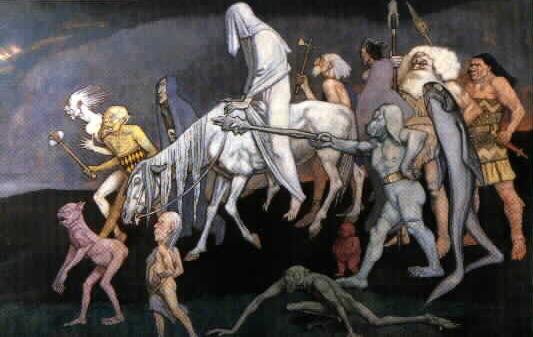This article is dedicated to Patrick Healy.
The Irish people have a long-standing relationship with ‘numinous presences in the landscape’, often referred to as the little people, or faeries. The literature provides a complex set of illusions. The writer, philosopher and independent scholar, my friend, Patrick Healy on a recent visitation tendered me a painting of Mad Sweeney (buile shuibhne), which forms part of his forthcoming exhibition in Amsterdam.
It made me consider the enduring relevance of the faeries, although I now live in Leatherhead in leafy Surrey, where the little people are well hidden.
In H.G. Welles’ remarkable parable of the future invasion by aliens from outer space, The War of the Worlds, we find the ultimate understanding of an existential threat. When Orson Welles put out his infamous 1938 broadcast, he set it in New York, causing a level of consternation that led some to flee to the nearby hills. The original book is of course set in Leatherhead, which is clearly not immune to faery tales.
Most contemporary faery tales often provide binary messages of good and evil for children – or even child-adults susceptible to manipulation – who see battles between good and evil and a Manichean Universe. Thus, children and adult minds can be manipulated, and often nefarious agendas can be set using their effect.
According to the plagiarised – but well received at the time – work of the psychologist Bruno Bethlehem The Uses of Enchantment, faery tales help children resolve Freudian oedipal conflicts. But on whose behalf? They are cautioned to stay safe from ‘evil’, but the meaning of good and evil is far from clear in this day and age.
Historically, faery tales contain a surprising level of terrifying violence, often involving gruesome acts such as cannibalism, witchcraft, and bodily metamorphosis, as with werewolves. They play to latent fears that can be deployed to manipulate or control the human psyche.
I will now draw out some crucial messages for the profound structural ways we organise our present lives around faery tales.

Illustration of “The Emperor’s New Clothes.” by Vilhelm Pedersen (1820 – 1859).
- The Emperor’s New Clothes
Hans Christian Andersen’s 1837 tale is based on a 1335 story from the Libro de los ejemplos (or El Conde Lucanor). It is short and alarmingly precise, involving an emperor of such vanity and so susceptible to flattery that his dressmakers get him to pose and preen naked.
It seems to me that most of the politicians of Ireland, the UK, the EU, and the world at large are the vain inheritors’ of the Emperor’s new clothes, with fake experts and insiders flattering and manipulating them. Political leadership is always subject to vanity and therefore susceptible to flattery.
Juxtaposition and Commentary
Where there is no leadership, the people perish.
Proverbs 29.18.
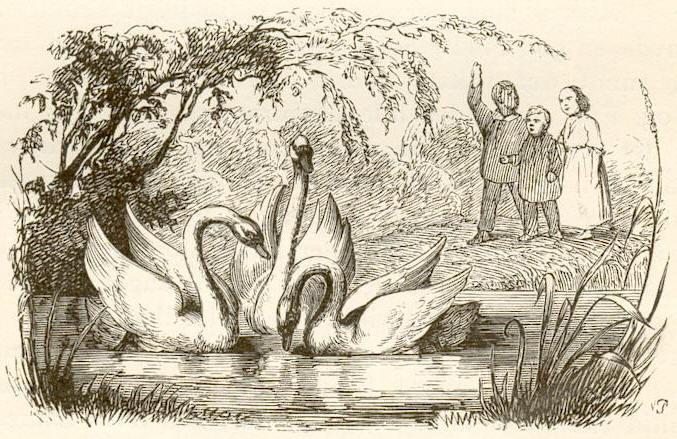
Vilhelm Pedersen illustration for “Ugly Duckling”
- The Ugly Duckling
This 1843 tale by Hans Christian Anderson is perhaps my favourite faery tale. Anderson was not a transcriber of faery tales – as the Brothers Grimm were – but a great creative artist. Here the eponymous ugly duckling is hounded out of the tribe, simply for being ugly, but a new tribe welcomes her as she is really a swan, not an ugly duckling at all. At one level this is about finding your niche and not associating with quacks – including those who force you out of town.
Juxtaposition and Commentary
‘Beauty is in the eye of the beholder.’
H. G. Welles
What we need now are more ugly ducklings, and not clean-cut conformists – the inappropriate adults in the room.

Hobbit holes or smials as depicted in Peter Jackson’s The Lord of the Rings film trilogy.
- The Hobbit
In J.R.R. Tolkien’s 1937 fantasy classic, an insignificant shire hobbit, Bilbo Baggins with the aid of dwarves and a magician defeats the dark forces in the battle of the five armies. Written just before World War II, it anticipated an Allied victory against the dark forces of fascism. A parable for that time and our own, which is elaborated upon in The Lord of The Rings.
Juxtaposition and Commentary
‘We burned to death 100,000 Japanese civilians in Tokyo, men women men women and children recognised that what was doing would be thought immoral if his side had lost. Lemay said if we HAD lost we’d all have been prosecuted as war criminals, and was right’
Robert McNamara, ‘The Fog of War’
Always keep in mind who the dark forces are, and that winning is not everything, or not always. Manichean battle between good and evil rarely occur. Who is evil today? Is it just Vladimir Putin or those who seek to prolong the war? And if Mr Putin is a war criminal, what of Bush, Blair and Biden?
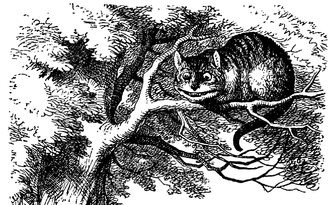
The Cheshire Cat.
- Alice Adventures in Wonderland
In Lewis Carrol’s famous 1865 story Alice falls into a rabbit hole, and witnesses a succession of fantastical creatures, including The Queen of Spades who conducts a trial in breach of due process: sentence first, verdict later.
Juxtaposition and Commentary
This cannot be improved upon in terms of a commentary on this age of prejudgement and guilt by social media, or in the wake of any accusation.
One modern version occurred when then Spanish minister Donna Luzon in advance of the Catalonia trials referred to those accused as the ‘convicted.’ We continue to find prejudgement of pre-crime, and conviction by association of those we disagree with. Quasi-internment. Deportations and extraditions. The obliteration of due process. The end of human rights. Endgame. Off with your head or to Rwanda.
Well mercifully the Court of Appeal disagrees in the U.K.. But what about Julian Assange’s final appeal?
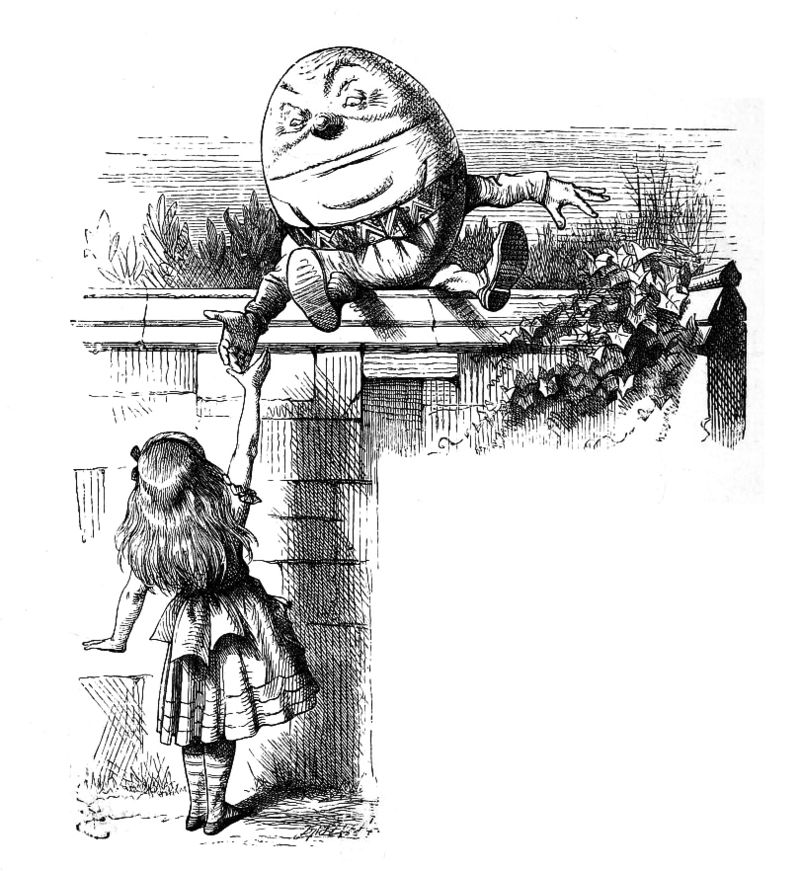
Humpty Dumpty and Alice, from Through the Looking-Glass. Illustration by John Tenniel.
- Alice Through the Looking Glass
The second Wonderland visit is best interpreted as being about language and the distortion of tradition.
Juxtaposition and Commentary
‘I know of only one authority which might justify the suggested method of construction. “When I use a word,” Humpty Dumpty said, in a scornful tone, “it means just what I choose it to mean, neither more nor less.”
“The question is,” said Alice, “whether you can make words mean so many different things.” “The question is,” said Humpty Dumpty, “which is to be the master, that’s all.” After all this long discussion the question is whether the words “If a man has” can mean “If a man thinks he has”. I have an opinion that they cannot, and the case should be decided accordingly.’
The above quote comes from Lord Atkin in his dissenting judgment in Liversidge v Anderson (1942). It concerned the decision to intern someone as a subversive without due process. Thus we find a direct transcription from the book in the great English language decision upholding due process at the height of the Second World War. A sole dissenting judgment from a man and lawyer in touch with working class sensibilities
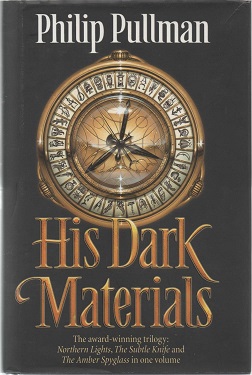
First combined edition (publ. Ted Smart, 2000)
- Northern Light / His Dark Materials
The ultimate anticipation of medievalism, with orcs seeking to undermine our hero Lyra, with her supportive, if ambiguous, daemons. Here we find the oppressive authority of organised religion and the death of the great bear Irek Brisson, who has fought so valiantly on her side.
Philip Pullman was clearly influenced by John Milton’s Paradise Lost (1667), where Lucifer seems to be seeking to save humanity from institutional religion – as opposed to Christian belief which is a force of good – thereby undermining the satanic myth of the fallen state from Original Sin.
The reversion to biblical historicism of the Old Testament is a dangerous feature of our age, not least in the US Supreme Court. As Pullman put it elsewhere: that great man Jesus and that scoundrel Jesus Christ.
Juxtaposition and Commentary
Original Intent interpreting a legal document from its inception, and not dynamically. Thus, America recognises the right to bear arms because it was acceptable over two hundred years ago. As Amy Coney Barrett put it after her appointment to the U.S. Supreme Court: ‘[Catholic judges] are obliged by oath, professional commitment, and the demands of citizenship to enforce the death penalty. They are also obliged to adhere to their church’s teaching on moral matters.’
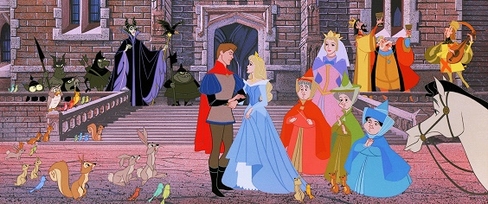
From Sleeping Beauty (1959 film).
- Sleeping Beauty
Based on the faery tale ‘La Belle Au Bois Dormant, published in 1697 by Charles Perrault, this story has been sanitised for popular consumption. In Disney’s retelling, the kiss of the prince awakens the sleeping beauty, but in the original telling of the tale she is not roused, and he falls in love with her body and essentially rapes her.
It is only at the birth of her twins when one of the babies suckles at her breast that she wakes up. The prince then tells her what has happened. As if all this was not bad enough it turns out that the prince’s mother is an ogress, who is longing to eat her grandchildren. The tale first appeared in England in 1729 in Stories or Faery Tales from Past Times.
Pantomimes and Disney have thus obliterated everything but the kiss.
Juxtaposition and Commentary
The idea of a prince coming to the rescue is also a theme in Rumpelstiltskin, and is the driving force in Cinderella too, although what makes for a prince is far from clear. Is it a man who abuses women or a coercive structure which abuses men and woman? Or worse still, those individuals who rape the earth. Thus, we should be careful about what and who we consent to, whether princes or princesses. Stay safe from sexual predators if you can.
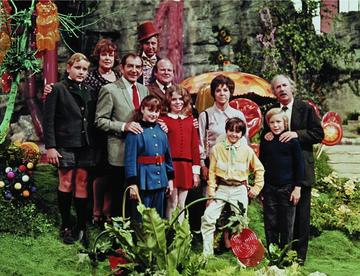
The main cast during filming in 1970.
- Willie Wonka and The Chocolate Factory
Let us remind ourselves of the plot of the 1971 movie (based on Roald Dahl’s novel), in which Willie Wonka owns a chocolate factory, but has closed it down, because of espionage and betrayal. Here a race of Oompah Lumpas work under him, who seem like incorruptible souls, like Norwegians perhaps or Icelanders.
So, in seclusion he creates the Wonka chocolate bars containing elusive golden tickets to a factory for a competition, as he is getting old and realises that someone else needs to take over the place.
The children lucky are given a series of tests, for he only trusts uncorrupted children to run the business. He is a man-child adult himself, or a magician or sorcerer. But he finds that the children have also been corrupted. Fallen angels in a world of illusions.
Charlie Buckets is the last recipient of the golden ticket. He fails because after cheating along with his grandfather. But is redeemable, as Wonka comes to the conclusion that the ideal child to run the chocolate factory is working-class. At one level his poverty has produced an element of dishonesty.
Juxtaposition and Commentary
Let us be wary of the inappropriate adults in the room and conscious of how poverty and social exclusion are an increasing feature of our time. So let us also be wary of going it alone, for the poor fall into traps set by the rich. And in an age of limited mobility to escape the debt trap, let us be wary of how and by what mechanisms the poor can inherit the earth or even achieve a basic income.
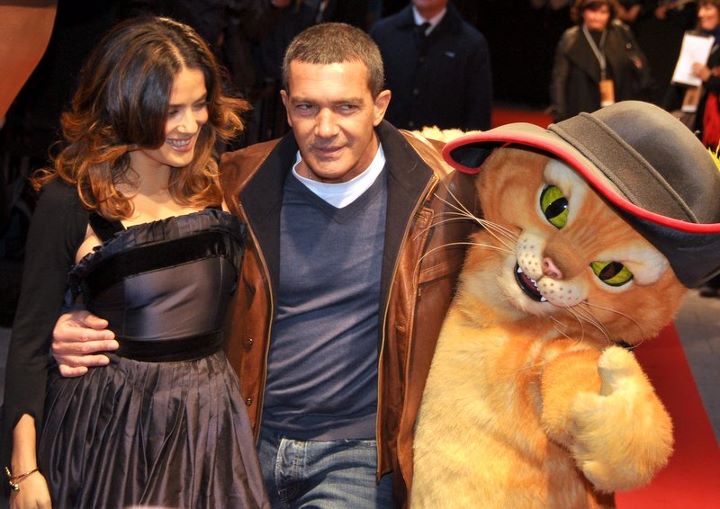
- Puss in Boots
The oldest written telling version is Costantino Fortunato (Italian for “Lucky Costantino”) by Italian author Giovanni Francesco Straparola.
Charles Perrault’s transcription is about a miller’s son who is left a cat in his father’s will. The miller’s son is none too delighted with his inheritance until the cat assures him that he can make the young man’s fortune. All the cat needs to accomplish this is a pair of boots. Thereafter, the cat makes him richer than his wildest dreams, and he marries the most beautiful princess.
Juxtaposition and Commentary
Beware of charming con men who claim they will make you rich, a lesson learnt by as all those who suffered from subprime mortgages and banking misrepresentations from the wolves of Wall Street in Ireland and elsewhere. Lies and misrepresentations that have been rubber stamped by the courts.
Beware of dynamic self-made monsters such as the unlamented Peter Sutherland for they have destroyed and pillaged the earth.
Readers should by now understand how we have been manipulated since childhood by faery tales in a deeply structural way, through the creation of a simplified world of good and evil.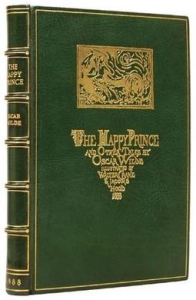
- Wilde Encounters…
I recently acquired a first edition Oscar Wilde’s Salome with illustrations by Beardsley. Now as I alight daily in Clapham Junction station on my way to court there is a plaque to Oscar Wilde as I change trains. I am reminded of being an aspiring young thespian in Trinity College 1989 where I played Edward Carson opposite to Patrick Healy as Wilde. So I conclude with Oscar Wilde’s faery tales – above all ‘The Nightingale’, along with ‘The Rose’, ‘The Happy Prince’ and ‘The Selfish Giant’.
By serving their masters selflessly, the swallow and the rose die and only the selfish giant gains a measure of redemption through the generosity of his soul. He had allowed Christ or Christ’s emblem into his garden and now he gains the garden of paradise, or is it the kingdom of heaven?
Feature Image: The Fomorians, as depicted by John Duncan (1912).

